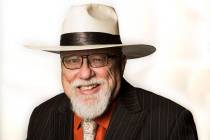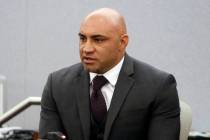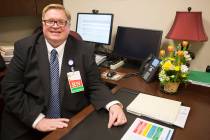Pound of prevention, trounce of cure?
Going from one extreme to the other — the American Way.
Now Walgreens, the drugstore chain I’ve long frequented, proves the point.
As part of a record
$80 million settlement with the Drug Enforcement Agency to resolve charges it failed to properly control sales of narcotic painkillers, the nation’s largest pharmacy enacted a plan to correct the problem. But the plan, doctors and patients say, is so controlling that proper pain management is affected.
Put into effect before the settlement was announced last month, the Walgreens strategy, at least as it has been interpreted by pharmacists in the field, has resulted in many calling physicians for explanations of diagnosis and treatment plans of patients, doctors say.
They add that X-rays, physical therapy results and other records are sometimes asked for before medication is dispensed.
They also say follow-the-leader pharmacies have followed suit.
Doctors, including Drs. James Marx and Stephen Dubin of Southern Nevada, are so angry the American Medical Association adopted a resolution calling “inappropriate inquiries from pharmacies to verify the medical rationale behind prescriptions, diagnoses and treatment ... an interference with the practice of medicine.”
So it goes in overreaction nation, where in 2009 Massachusetts officials concerned about nut allergies evacuated a school bus full of 10-year-olds after a stray peanut was found on the floor.
If that’s not nuts, doctors think it’s surely nuts for pharmacists to treat every doctor like a drug kingpin, though even Dr. Ivan Goldsmith, a vocal critic of recent pharmacists’ behavior, conceded there have been pill mill physicians.
Michael Polzin, a Walgreens spokesman, said company pharmacists, perhaps fearful of losing licenses, may be going beyond company policy. He said asking for X-rays and physical therapy results, for example, is not policy. But inquiry into whether a doctor prescribed medication and finding out whether an exam took place before pills were prescribed is critical, he said.
If questions arise, he said it’s appropriate to talk with the doctor about diagnosis, but the doctors’ staff can answer most questions.
Often key for pharmacists, he said, is “whether there has been a recent examination.”
Scott Rogers, a casino bartender injured in a motorcycle accident, was stunned when a pharmacist decreased his pain pills.
“Doctor talked to them and they still did it,” he said. “Do they want me to buy street drugs like a criminal?”
Goldsmith was irate.
“The pharmacist isn’t a doctor,” he said. “They call all day wanting to know how I treat people and do what they want.”
Given the problem with prescription drugs — the government’s latest figures show overdose deaths from painkillers totaled more than 16,500 in 2010, more than heroin and cocaine combined — it isn’t surprising to Paul Edwards, general counsel of the Nevada State Board of Pharmacy, that some “innocents” get hurt as solutions are sought to end abuse.
“People are more cautious,” he said.
That’s good. But friction between physicians and pharmacists, who must work together to curb drug abuse, is unfortunate.
It’s silly that local pain specialist Dr. Walter Kidwell, who admits some doctors write scripts too freely, feels compelled to put up signs telling patients not to use Walgreens.
“It’s appropriate to call a doctor to see if he’s prescribed medication and examined the patient,” Kidwell said. “But I can’t jump through all their hoops. I’d be on the phone all day talking about diagnoses and treatment plans instead of seeing patients.”
Though local independent pharmacist Stuart Lindsey believes some colleagues are overreacting, Thomas Menighan, CEO of the American Pharmacists Association, wrote in response to the AMA resolution that pharmacists are validating prescription orders.
Stamping out prescription drug abuse, of course, shouldn’t just be about filling prescriptions. It should also be about practitioners educating people that sometimes biofeedback, acupuncture, massage, physical therapy or exercise work better than pills.
And some experts, including Dr. Andrew Kolodny, the New York City psychiatrist who heads Physicians for Responsible Opioid Prescribing, believes stopping drug abuse should also include tightened regulations for pain medications.
In 2007, the FDA did just that, busting the manufacturer of OxyContin for deliberately misleading physicians about the drug’s hazards.
Still, even though the highly addictive painkillers were tested only for short periods in seriously ill patients, the agency cleared them for any “moderate to severe” chronic pain.
“We now have overwhelming evidence that long-term use is unsafe and ineffective,” Kolodny told MSNBC recently. “But the approval language lets manufacturers promote long-term use, and it lets physicians think they’re prescribing the drugs appropriately when they’re not.”
OxyContin, Kolodny and other health groups told the FDA, should no longer be used for “moderate” noncancer pain and should only be used for a maximum 90 days with a maximum daily dose equivalent to 100 milligrams of morphine for noncancer pain.
The FDA is studying the issue.
Of course, curbing prescription drug abuse means companies such as Walgreens, cannot, as the DEA stressed, engage in failing to report pain medication orders “so suspicious” pharmacists “knew or should have known” they were fraudulent.
Nor can a company do what Walgreens has agreed to stop — compensate pharmacists based on volume of prescriptions filled.
It’s also critical that doctors and pharmacists use state monitoring services showing which patients are using which painkillers.
A recent study found many doctors “do not access these prescription histories before writing patients’ prescriptions.” Such information would cut down on “doctor shopping” that results in some patients, the study found, having as many as 32 prescriptions from 10 doctors.
That translates to an astonishing 4.3 million painkiller prescriptions diverted to illicit use.
Stemming the wave of prescription drug abuse is tough. A turf war between doctors and pharmacists only makes it tougher.
Contact reporter Paul Harasim at
pharasim@reviewjournal.com or 702-387-2908.

















